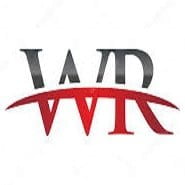-

-
Wikirise.com Advertise with Us HereStats: 4,783 members, 41,616 Posts
Number of Comments : 2,630
Date: Wednesday, 25th December 2024
15 Gestures That Have Different Meanings in Other Countries
By Godwin Emmanuel - December 12, 2020 | Categories: Wiki Tags: Foreign
Share this post:
Gestures are an essential means of communication. And while words might do the job, we still turn to our hands to pass information to each other. But as gestures occur in vastly different cultures, their meanings may be hard for outsiders to find out. Even if the gesture may be the same, the meaning behind it can be drastically modified.
Often these cross-cultural mix-ups can be innocent or humorous, but other times, you may unintentionally insult or threaten someone without even having any clue. Today, we’re taking a look at 15 signs that Americans use that mean drastically different things in other countries.
Nodding

For Americans, nodding to someone talking means you agree with what they’re saying, or it’s just a way to show that you’re actually listening to others. In Bulgaria and Greece, however, this gesture means the opposite—you disagree with what they say.
Middle Finger

If we want to offend someone in the U.S., we could flip the bird. Our culture’s middle finger is one of the most offensive expressions you may use. But don’t get insulted if you’re in China’s sea of middle fingers—it’s finger they usually use to point with and don’t show ill will.
Crossed Arms

Often in America, crossed arms may be a mild sign of meanness or rage, but that’s how many people instinctively rest their arms. It’s best, though to avoid this gesture entirely in Finland—it can mean you’re causing trouble or starting a war.
Prayer Hands

When Americans pray, they sometimes place their palms near the chest. Nepal, however, is a traditional and friendly way to greet someone or say goodbye.
V Sign

Originally “v” stood for “victory.” Now it is used as the “peace sign.” You notice it sometimes when people are trying to evoke hippies, and it’s such an iconic part of taking pictures in Japanese society that Time Magazine did a write-up on where it originated from.
That being said, please ensure you have your palm heading away from you. In Australia and the UK, this symbol (with the palm facing inward) has had the same significance as the middle finger since at least the year 1330. In those nations, you’ll be saying “F*** You!” which seems to be quite the contrary of “peace.”
A-ok

Forming a circle with your thumb and pointer finger generally means “OK!” in the U.S. In certain Middle Eastern nations, it portrays the evil eye. However, a more common definition is you’re an a**hole.” This is taken that way in Greece, Spain, and Brazil.
There’s another level of homophobic subtext to Turkey’s gesture. Once famously, Nixon made this first impression to a country. Never do that. White nationalists have recently co-opted the sign for their own purposes also in the U.S., distorting the apparently innocuous original meaning depending on the context it is portrayed in.
Thumbs Up

In America, this generally means “Great job!” In Greece, Latin America, the Middle East, Russia, and elsewhere, it means “Up yours!” If you’d like to be rude, you can put your thumb up to highlight the offensive message, but chances are you would just like to avoid it.
Fingers crossed

To an American, it’s a very generic way to evoke good luck. Nobody does it in except women in tone-deaf romantic comedies, but the concept is still recognized. However, in Vietnam, the gesture is believed to be… explicitly feminine. Consider it a female analogue to flipping someone off.
Hands Below the Table

U.S. kids are drilled not to place their arms on the table while they eat. But in France, it’s respectful to keep your hands on the table, palm down on either side of your plate. When your hands slip below the table, your host will wonder what you’re doing with them.
Using Your Left Hand

This is hard. There are still places in the U.S. where people have difficulty using their left hand, but in wide portions of Africa, Asia and the Middle East, the left hand is still traditionally mired with personal hygiene connotations. Giving a gift with lefty usually used for toilet paper is a big no-no. A handshake is also not recommended.
Money Fingers

Money speaks in the U.S.—so much so we got a sign for it. But if you do this in South Korea, they won’t even think you’re obsessed with money. Instead they’ll think you’re romance obsessed, as this gesture indicates “love.”
Pointing Somebody

For a long time, pointing at someone in the U.S. may be considered a semi-aggressive gesture, however over the period it has also become a humorous symbol of approval. However, this motion is considered highly offensive in countries worldwide. For example, in some African countries, pointing at objects is only appropriate, never people.
Waving Goodbye

Waving goodbye is American second nature. It’s straightforward, unlikely to offend someone. In areas of Europe and South America, this gesture means “no” instead of farewell.
Animal Horns on Head

This symbol isn’t really a major thing in the United States, but we could use it to pantomime a horned animal or to be silly. However in Japan, it’s not such a jokey sign. Rather this gesture reflects demon horns, suggesting that someone is extremely unhappy.
Phone Hand

In the United States, if we’re to mime a phone call, we could take our thumb and pinky and put our hand up to our ear like a receiver. That being said, if you were in Hawaii, this sign could mean relax, while in Germany it means you’re trying to order a beer.